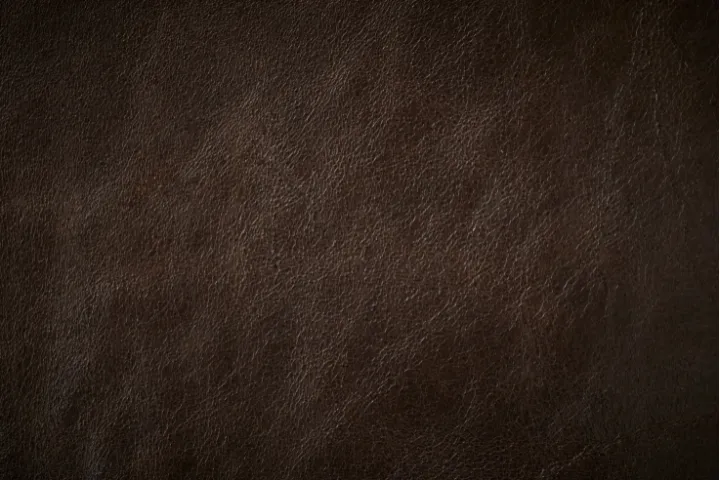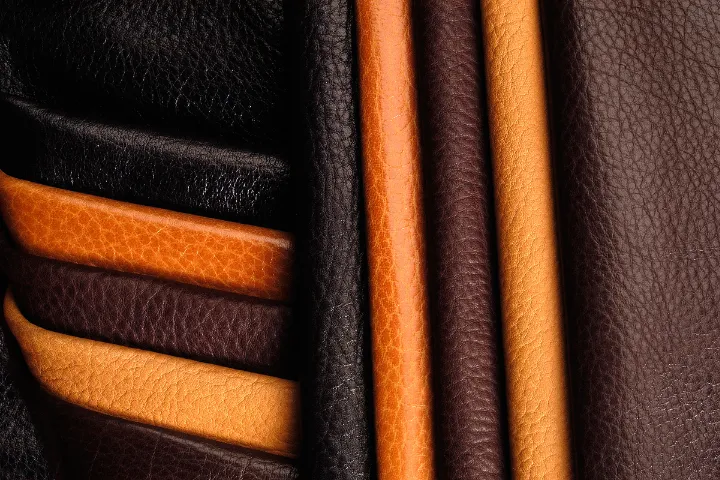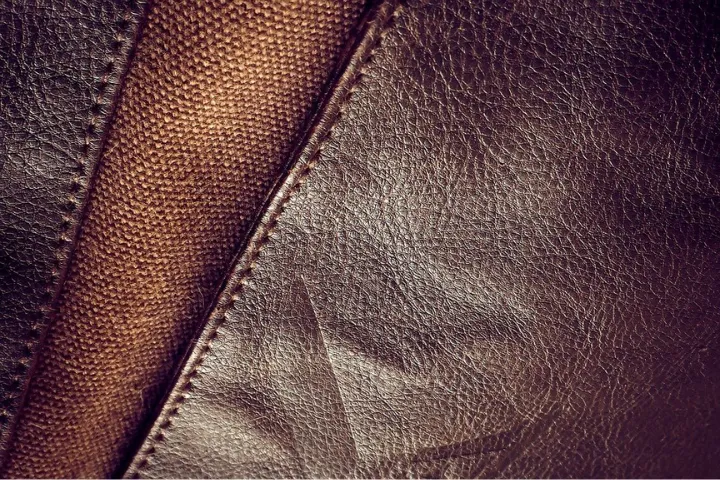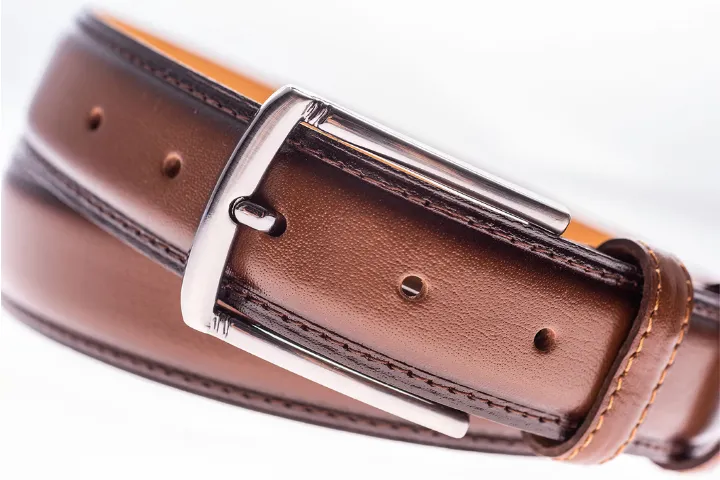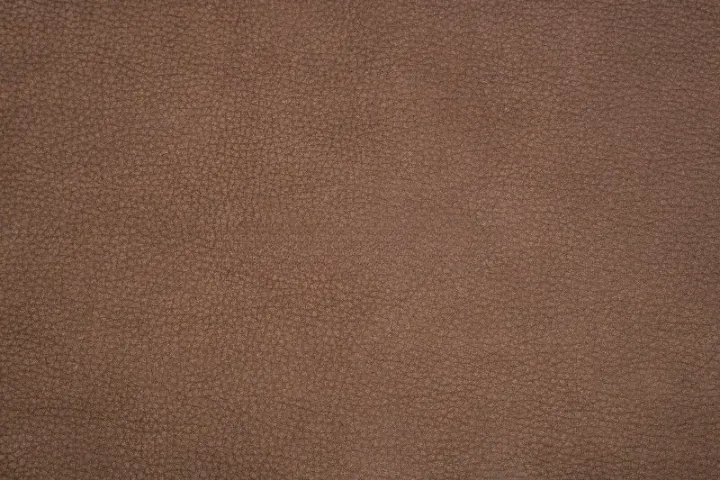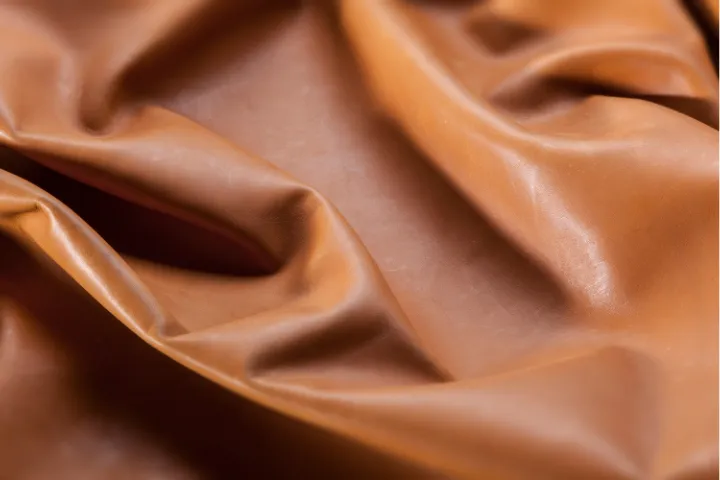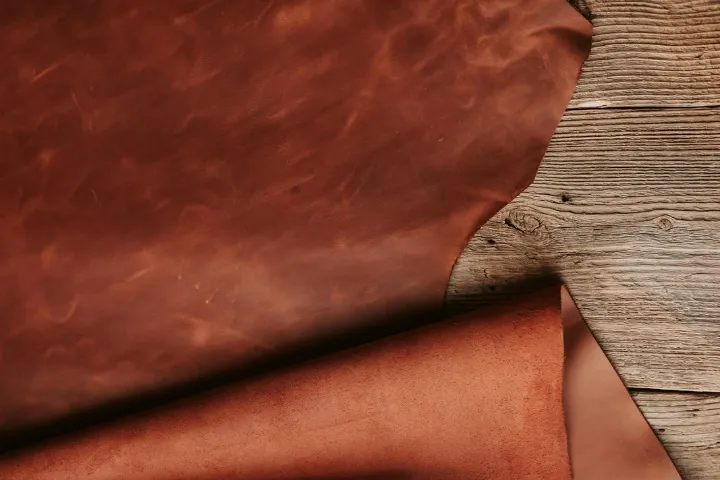Think about your favorite leather jacket, a comfortable sofa, or a sturdy pair of boots. Chances are, cowhide forms the foundation of them all. For centuries, cowhide has been the workhorse of the leather world, prized for its timeless appeal and incredible versatility. It’s a material that can be rugged and tough or smooth and luxurious. This unique adaptability is why designers and craftsmen rely on it to create some of the most iconic products we use every day.
Bovine leather is the tanned hide of animals from the cattle family, including cows, bulls, and calves. As a natural byproduct of the food industry, it is the most abundant and widely used leather globally. Its popularity stems from its exceptional durability, versatility, and the wide range of grades and finishes available, making it the foundational material for industries from fashion and furniture to automotive manufacturing.
But what really makes bovine leather so special? How can you tell a high-quality piece from a cheap imitation, and what is the difference between “bovine” and “cowhide”? This comprehensive guide will answer all your questions. We will explore its journey from a raw hide to a finished product, break down the different types and grades, and cover its many uses. By the end, you will understand exactly why bovine leather remains the gold standard for durable, versatile, and beautiful goods.
What is Bovine Leather? Definition and Meaning
In the leather world, the term “bovine” refers to the entire family of cattle. This includes not just cows but also bulls, oxen, steers, and even calves. So, when we talk about bovine leather, we are talking about any leather that comes from these animals. This broad category represents the vast majority of leather produced and used around the globe.
Historically, bovine leather has always been a byproduct of the meat and dairy industries. This makes it a highly sustainable and abundant resource. Instead of discarding the hides, tanners transform them through the tanning process into a durable, valuable material. This practical origin is a key reason for its enduring importance.
Bovine Leather vs. Cowhide: Are They the Same?
People often use the terms “bovine leather” and “cowhide” interchangeably, but there is a subtle difference. Think of it like this: all cowhide is bovine leather, but not all bovine leather is cowhide.
- Bovine Leather: This is the umbrella term for any leather from the cattle family.
- Cowhide: This specifically refers to leather from a female, adult cow.
- Other Bovine Types: This category also includes steerhide (from male cattle), which is known for being tougher, and calfskin (from young cattle), which is prized for its soft, fine grain.
In everyday language, most people say “cowhide” to refer to all types of leather from cattle, which is why the terms have grown so closely linked.
Is Bovine Leather Real Leather?
Yes, bovine leather is 100% real, authentic leather made from animal hide. It is not a synthetic material like faux or vegan leather. If you see a product labeled as “bovine leather,” you can be confident that it is the genuine article. You can identify it by:
- Its unique texture: Real bovine leather has natural pores and small imperfections.
- Its smell: It has a rich, earthy scent that plastic cannot replicate.
- Its feel: It feels supple and will wrinkle under pressure, unlike stiff synthetic materials.
Origins and Sources of Bovine Leather
Bovine leather comes from a vast global supply chain that is directly linked to agriculture. The journey of every leather product begins on a farm. Understanding this origin story is key to appreciating both the quality and the ethical considerations behind the final product.
Where Does Bovine Leather Come From?
The supply chain for bovine leather follows a clear path. It begins on farms where people raise cattle, primarily for meat and dairy. After the animals are processed, their hides are preserved and sent to tanneries. At the tannery, artisans transform the raw hides into finished leather. This direct link to the food industry makes bovine leather an ethically sourced byproduct. Using the hide reduces waste and makes the most of a valuable resource.
Global Sourcing and Regional Differences
Manufacturers source bovine hides from all over the world, with major producers in the United States, Europe, and Asia. However, the quality of the hide can vary based on the region and the breed of the animal.
- Breed Impact: Different cattle breeds produce different hides. For example, the hide from an Angus cow (raised for meat) may be thicker than one from a Holstein cow (raised for dairy).
- Regional Quality: People often consider European hides, particularly from Italy and Turkey, the highest quality. This is because farmers often raise the cattle on smaller farms with fewer barbed-wire fences and insect bites, resulting in fewer natural blemishes on the skin. American hides are known for their large size and durability.
The Production Process of Bovine Leather
The journey from a raw bovine hide to a finished leather product is a fascinating blend of science and craftsmanship. This complex process involves several key stages, each one crucial for creating the durable and beautiful material we use in our daily lives. From cleaning the raw hide to the final finishing touches, every step matters.
From Raw Hide to “Crust” Leather
Before tanning can begin, tanners must meticulously prepare the raw hide. This involves several steps to clean the hide and get it ready for tanning. People often call this semi-processed, untanned state “crust” leather.
- Preparation: The process starts with soaking and liming to remove dirt and hair.
- Tanning: This is the most critical step. Tanners treat the hide with agents to preserve it and prevent it from decaying. The two most common methods are:
- Chrome Tanning: A fast, modern method using chromium salts. It produces a soft, water-resistant leather and accounts for over 80% of bovine leather.
- Vegetable Tanning: An ancient, eco-friendly method using natural plant tannins. It creates a firm leather that ages beautifully.
Splitting and Finishing the Hide
After tanning, a machine often splits the thick hide into layers. This is where the different grades of leather are born.
- Splitting: A machine cuts the hide into a top layer and a bottom layer. The top layer becomes full-grain or top-grain leather, while the bottom layer becomes split leather, often used for suede.
- Finishing: This is the final stage where the leather gets its color and texture. Processes include dyeing, oiling to add suppleness, buffing for softness, or embossing to create patterns like a pebbled grain. Tanners may also apply a final protective coating to enhance durability.
Types and Varieties of Bovine Leather
Bovine leather is not a single material but a diverse category with many variations. The grade, finish, and age of the animal all create different types of leather, each with its own unique characteristics and best uses. From the ruggedness of full-grain to the luxury of calfskin, there is a type of bovine leather for every purpose.
- Full-Grain Bovine Leather: This is the highest quality and most durable grade. Because manufacturers do not sand it, it retains all the natural imperfections and develops a beautiful patina, making it perfect for heirloom-quality products.
- Top-Grain Bovine Leather: This is the most common type used in premium products. Tanners sand the surface for a uniform look, making it a versatile choice for everything from handbags to furniture.
- Split and Corrected-Grain: These are more affordable options. Manufacturers use split leather to make suede, while they heavily process corrected-grain to create a flawless, durable surface for items like car seats.
Calfskin: A Premium Bovine Variant
Calfskin is a special type of bovine leather prized for its incredible softness and fine grain. It comes from young cattle, so its fibers are denser and smoother than those of an adult cow. This gives it a luxurious, velvety feel. Because of its delicate nature and high cost, designers reserve it for high-end luxury goods like designer handbags, gloves, and dress shoes.
Bovine Crust Leather: What Does It Mean?
Crust leather is bovine leather that tanners have tanned but not yet finished. It is a semi-finished product that has not been dyed or coated. This makes it a blank canvas for manufacturers. It offers incredible customization benefits, as artisans can dye, emboss, and finish it in countless ways to meet the specific design needs of a product.
Characteristics and Properties of Bovine Leather
Bovine leather is the industry standard for a reason. Its natural properties give it a unique blend of strength and beauty. The appearance of bovine leather is incredibly versatile, with a wide range of grain patterns, colors, and textures, from perfectly smooth to richly pebbled. Its key characteristic is its durability. The thick, dense fiber structure makes it highly resistant to tears and punctures, ensuring that a well-made product can last for decades.
Is Bovine Leather Soft?
The softness of bovine leather depends on three main factors:
- The Animal’s Age: Calfskin, from a young animal, is much softer and has a finer grain than the hide of an adult cow.
- The Tanning Method: Chrome tanning produces a much softer, more flexible leather than the traditional vegetable tanning method, which results in a firmer hide.
- The Finishing Process: Techniques like tumbling can soften the leather and create a supple, broken-in feel right from the start.
Is Bovine Leather Waterproof?
Bovine leather is naturally water-resistant but not fully waterproof. Its dense grain can repel light moisture, but it will absorb water if it gets soaked. Many manufacturers apply a protective coating during the finishing process to enhance its water resistance. For items that will be exposed to the elements, like boots or jackets, an additional waterproofing spray is always a good idea.
Advantages and Disadvantages of Bovine Leather
No material is perfect, and bovine leather is no exception. While its strengths are legendary, it also has some practical and ethical drawbacks. Understanding both sides allows you to make a balanced decision and choose the right material for your specific needs.
The Benefits of Choosing Bovine Leather
Bovine leather remains the world’s most popular choice for a reason. Its advantages make it a reliable and high-value material for a huge range of products.
- Durability and Versatility: It is exceptionally strong and can be crafted to be either firm or soft, making it suitable for almost any application.
- Abundance and Cost-Effectiveness: As a byproduct of the food industry, it is widely available and more affordable than exotic leathers.
- Comfort and Aesthetic Appeal: It is breathable and comfortable against the skin. High-quality grades also develop a beautiful patina, enhancing their look over time.
Potential Drawbacks and How to Mitigate Them
It’s also important to be aware of the potential downsides of bovine leather. You can, however, manage many of these with proper care and smart choices.
- Weight: Its dense fibers make it heavier than sheepskin or synthetic alternatives.
- Stretching: If not properly cared for, it can stretch over time. You can prevent this by not over-stuffing bags and storing jackets on padded hangers.
- Heat Retention: Bovine leather can feel warm in hot climates. Lighter colors can help mitigate this by reflecting sunlight.
Common Uses and Applications of Bovine Leather
Thanks to its incredible versatility, you can find bovine leather in almost every aspect of modern life. Its unique ability to be tanned and finished in countless ways means it can be adapted for nearly any purpose, from rugged industrial gear to the most delicate luxury accessories. This adaptability is its greatest strength.
Bovine Leather in Everyday Products
Bovine leather is a true staple in our daily lives, valued for its durability and timeless style. Here are some of its most common applications:
- Fashion: It is the go-to material for high-quality jackets, shoes, belts, bags, and wallets that are built to last.
- Furniture and Upholstery: Its strength and large size make it perfect for sofas and chairs. For a rustic touch, hair-on cowhide rugs are a popular home decor choice.
Industrial and Specialized Applications
Beyond fashion and furniture, bovine leather’s toughness makes it essential for more demanding jobs. Professionals in many recreational and industrial fields rely upon its protective qualities.
- Automotive: It is the standard for durable and luxurious car seats and interiors.
- Equestrian: For centuries, craftsmen have used thick, vegetable-tanned bovine leather to make strong and reliable saddles and holsters.
- Protective Gear: Its resistance to abrasion makes it ideal for industrial work gloves and motorcycle gear.
How to Care for and Maintain Bovine Leather
A high-quality bovine leather product is a long-lasting investment. With a simple care routine, you can protect this investment, ensuring your products stay beautiful for years. The key is to keep the leather clean and moisturized to prevent it from drying out and cracking.
Step-by-Step Cleaning Guide
Regular maintenance is easy and makes a huge difference. You only need a few simple tools to keep your bovine leather in top shape.
- Dust It Off: Use a soft, dry cloth to wipe away any surface dust. Do this weekly for items you use often.
- Clean Gently: For dirt or light stains, use a cloth dampened with a specialized leather cleaner. Work in small, circular motions.
- Condition the Leather: Once the leather is dry, apply a high-quality leather conditioner with a new cloth. This restores moisture and is the best way to soften the hide and prevent cracks. Let it absorb, then buff off any excess.
Preventing Common Issues
The best way to care for your leather is to prevent damage before it happens. Proper storage is crucial. Keep your bovine leather items out of direct sunlight and away from extreme heat, which can cause them to dry and fade. Store bags in a breathable dust bag and use a wide hanger for jackets to help them keep their shape. If the leather gets wet, always let it air dry naturally.
Bovine Leather Comparisons
While bovine leather is the industry’s top choice, it isn’t the only option available. Understanding how its unique properties compare to other common leathers can help you choose the perfect material for your needs. The decision often comes down to a trade-off between bovine’s rugged durability and the specific qualities of other hides, like softness or light weight.
Bovine vs. Other Animal Leathers
Each type of animal hide offers a different experience. Here’s a quick look at how they stack up against bovine leather:
- Sheepskin: This leather is much softer and lighter than bovine. However, it is far more delicate and less resistant to wear and tear. It’s ideal for luxury gloves or jacket linings where comfort is key.
- Goatskin: Offering a nice balance, goatskin is softer and more supple than bovine leather but still surprisingly durable for its weight. Designers often use it for high-end handbags that require a bit of flexibility.
- Calfskin: As a premium bovine variant, calfskin is softer and has a finer grain than adult cowhide, making it a favorite for luxury shoes and accessories.
Bovine vs. Synthetic Alternatives
In the debate between real and faux leather, bovine leather has clear advantages. Its natural fibers make it breathable and able to develop a rich patina, which synthetics cannot do. While faux leather is cheaper and cruelty-free, it is essentially a plastic material. It does not last nearly as long and is prone to cracking and peeling, making high-quality bovine leather a better long-term investment.
Sustainability and Ethical Considerations in Bovine Leather
The conversation around bovine leather is no longer just about quality; it’s about responsibility. As consumers and brands become more conscious of their impact, understanding the ethical and environmental aspects of leather production is essential. While the industry faces valid challenges, a growing movement towards sustainable practices is transforming the future of bovine leather.
Is Bovine Leather Sustainable?
The sustainability of bovine leather is a complex topic with strong arguments on both sides. On one hand, its production is resource-intensive. On the other hand, its origin as a byproduct of the food industry makes it an excellent example of upcycling.
- The Byproduct Advantage: The primary ethical and sustainable argument for bovine leather is that it uses a part of the animal that would otherwise go to waste. This reduces landfill waste and makes full use of the resources used to raise the animal.
- Eco-Friendly Options: The environmental impact is largely determined by the tanning method. By choosing vegetable-tanned leather, which uses natural, biodegradable tannins, you are opting for a much more sustainable process than traditional chrome tanning.
Future Trends in Eco-Friendly Bovine Leather Production
The future of bovine leather is green. The industry is rapidly innovating to reduce its environmental footprint. This includes the development of new bio-based tanning agents that are even cleaner than vegetable tannins. Additionally, there is a strong push for traceability. This allows consumers to trace a hide back to a farm with certified animal welfare and environmental standards. Choosing brands that embrace these innovations is the best way to support a more sustainable leather industry.
Frequently Asked Questions (FAQs)
Is bovine leather expensive?
The price of bovine leather varies widely based on its grade. Full-grain and top-grain are premium, expensive materials due to their high quality. Lower grades like split or genuine leather are much more affordable. In short, you get what you pay for in terms of durability.
What is the difference between bovine and calf leather?
Calf leather (or calfskin) is a type of bovine leather, but it comes from a young cow. This makes it significantly softer, lighter, and finer-grained than leather from an adult cow. People consider it a luxury material and often use it for high-end accessories.
How can you tell if something is made from bovine leather?
Look for a natural, imperfect grain pattern and visible pores. Real bovine leather has a rich, earthy smell and feels supple. A product labeled “100% Bovine Leather” from a reputable brand is also a strong indicator of authenticity.
Is bovine leather good for jackets?
Yes, it is one of the best materials for jackets. Its natural durability, wind resistance, and breathability make it both protective and comfortable. A well-made bovine leather jacket can last for decades.
Where to buy high-quality bovine leather products?
For the best quality, always buy from reputable brands or manufacturers that are transparent about their sourcing and the grade of leather they use. Look for products made from full-grain or top-grain bovine leather for the best long-term value.
Conclusion
Bovine leather has earned its place as the world’s most trusted and versatile leather for a reason. Its unique combination of durability, comfort, and timeless style makes it the foundation of countless high-quality goods, from rugged boots to elegant handbags. By understanding the differences between its grades—prioritizing full-grain and top-grain—and recognizing the importance of ethical sourcing, you can confidently choose a product that offers true, lasting value.
A well-made cowhide item is more than just a purchase; it is an investment in craftsmanship that will last for years, developing character and telling a story along the way. This comprehensive guide has equipped you with the professional insight needed to appreciate this amazing material and make informed decisions.
Are you ready to create products with the enduring quality of premium cowhide? Explore the possibilities with a manufacturing partner who understands true craftsmanship. At Hoplok Leather, we specialize in creating high-quality, custom cowhide items tailored to your brand’s vision. Visit Hoplokleather.com or contact us today to inquire about our custom design services and pricing. Let’s build something that lasts.



